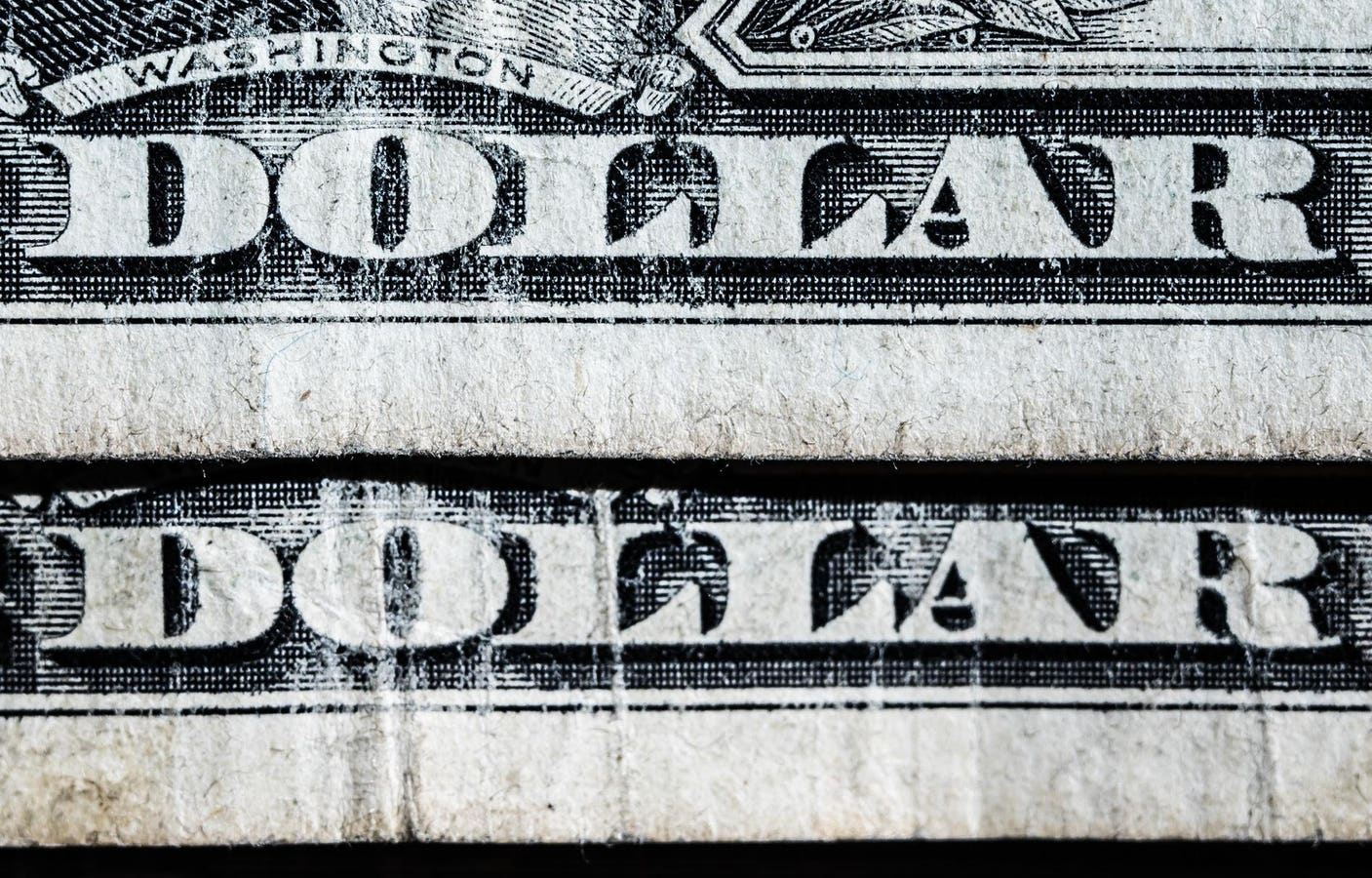15 June 2022, Baden-Wuerttemberg, Rottweil: US dollar bills lie on a table in an office. Photo: … [+]
By any reasonable measure, President-elect Donald Trump was right when he said over the weekend that “there is no chance that the BRICS will replace the U.S. dollar in international trade.” But without such a threat from this group of nations led by Brazil, Russia, India, China and South Africa, Trump’s threat of a 100% tariff in retribution seems unnecessary.
The dollar is the global reserve currency and there is no sign of that changing. People use it because it’s in their interest to do so. No one forces them. There is simply no currency out there in the world that can replace it in terms of volume or liquidity. It’s not even close.
On volume, International Monetary Fund data show that the dollar represents 58% of the value of foreign reserve holdings worldwide. The euro, which is the official currency of 20 European Union countries, comes in at a distant second at 19.8%. Next is the Japanese yen at 5.6%.
On liquidity—which refers to how many buyers and sellers a currency has, and the ease with which it can be traded at a price close to its true value—the dollar again reigns supreme. It’s the most actively traded currency in the world. Again, the euro and the yen are the two most traded currencies against it. Generally, the larger, more stable and more entrenched a currency is in the global economy, the more liquid it is. There’s always going to be someone who wants to buy it or sell it, and it is relatively stable, so there is little risk in holding it.
Two key fundamentals drive the U.S. dollar’s volume and liquidity. First is the nature of the United States as a nation and economy. Obviously, this is a strong, sovereign nation backed by strong economic growth. Second is the robust and transparent nature of U.S. institutions and the U.S. legal system. People would rather hold their money in a currency they trust, not one run by an authoritarian government or backed by crony capitalism.
While Russia would certainly benefit from de-dollarization (e.g., President Putin could continue his war efforts against Ukraine unimpeded by Western sanctions), it’s not clear whether the other BRICS would want that. At last year’s BRICS summit in Johannesburg, the Indian, Chinese and South African delegations all said in their opening statements that they have no interest in a BRICS currency. South Africa’s BRICS ambassador said “there are no plans to discuss replacing the U.S. dollar as the world’s de facto currency.” The summit did not even have de-dollarization on the agenda.
This year’s summit, hosted by Russia, was even more telling. As delegates prepared for their trip to Kazan, a city in southwest Russia, they received information from Moscow about currency transactions. Delegates were told that that their credit cards (e.g., Visa, Mastercard, etc.) would not work. Participants were urged to bring cash, preferably U.S. dollars or euros. There were even rumors that the Russians were telling people that they wouldn’t be able to change their dollars or euros back to other currencies before they left, presumably because Russia needs the dollars so badly. In other words, while Russia is talking up the idea of another currency, they can’t even make it work themselves.
Thus, threatening other countries for not using the dollar is kind of like Ford or GM threatening drivers who buy large, unwieldly, circular vehicles from another automaker. There’s no need for the threat because no one wants a circular vehicle. It might sound interesting or new, but it would not be practical on the road. You couldn’t really drive it or park it anywhere.
Trump’s threatening stance to protect the dollar seems similarly pointless. The BRICS themselves don’t want a competing currency, or else just can’t do it. Countries have not signed on to alternatives because there aren’t any.


